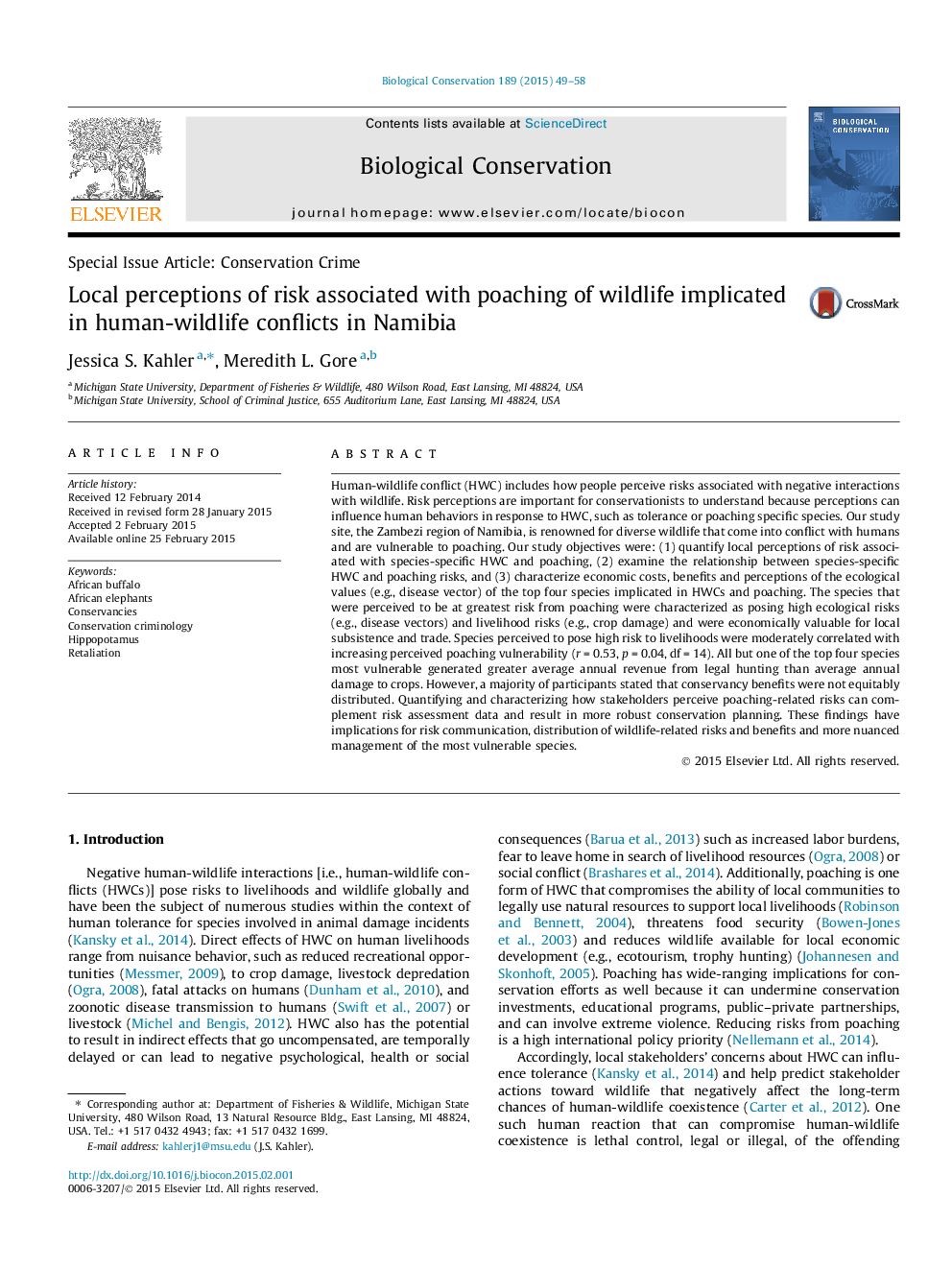| کد مقاله | کد نشریه | سال انتشار | مقاله انگلیسی | نسخه تمام متن |
|---|---|---|---|---|
| 6299163 | 1617912 | 2015 | 10 صفحه PDF | دانلود رایگان |
Human-wildlife conflict (HWC) includes how people perceive risks associated with negative interactions with wildlife. Risk perceptions are important for conservationists to understand because perceptions can influence human behaviors in response to HWC, such as tolerance or poaching specific species. Our study site, the Zambezi region of Namibia, is renowned for diverse wildlife that come into conflict with humans and are vulnerable to poaching. Our study objectives were: (1) quantify local perceptions of risk associated with species-specific HWC and poaching, (2) examine the relationship between species-specific HWC and poaching risks, and (3) characterize economic costs, benefits and perceptions of the ecological values (e.g., disease vector) of the top four species implicated in HWCs and poaching. The species that were perceived to be at greatest risk from poaching were characterized as posing high ecological risks (e.g., disease vectors) and livelihood risks (e.g., crop damage) and were economically valuable for local subsistence and trade. Species perceived to pose high risk to livelihoods were moderately correlated with increasing perceived poaching vulnerability (r = 0.53, p = 0.04, df = 14). All but one of the top four species most vulnerable generated greater average annual revenue from legal hunting than average annual damage to crops. However, a majority of participants stated that conservancy benefits were not equitably distributed. Quantifying and characterizing how stakeholders perceive poaching-related risks can complement risk assessment data and result in more robust conservation planning. These findings have implications for risk communication, distribution of wildlife-related risks and benefits and more nuanced management of the most vulnerable species.
Journal: Biological Conservation - Volume 189, September 2015, Pages 49-58
